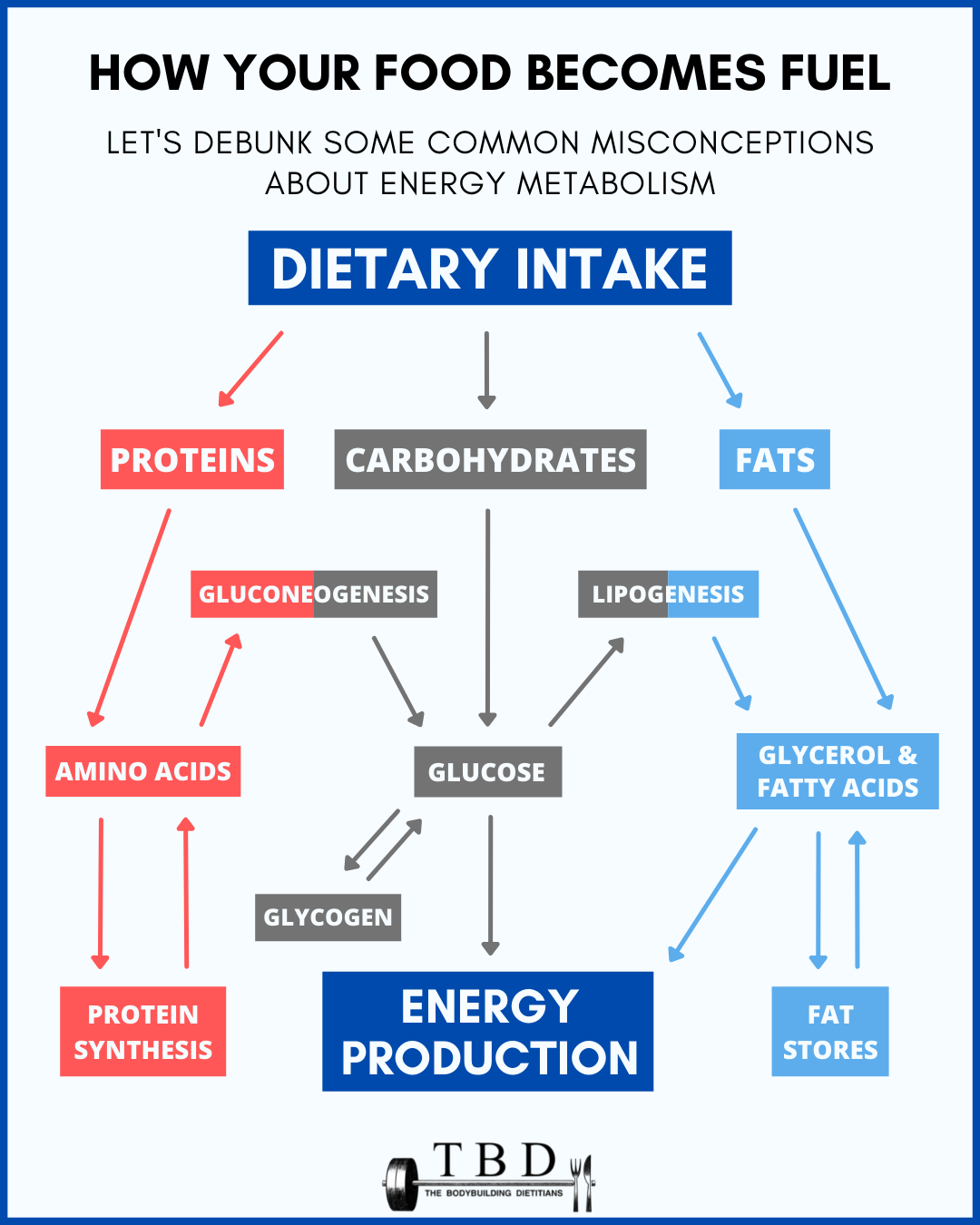Energy metabolism is often a misunderstood concept
The above infographic aims to explain how the food we consume is broken down into it’s individual components of amino acids, glucose and fatty acids. Also, how this can be used to produce energy or create new structures and tissues within the body. Take note that we’ve created this diagram to appear extremely simple, whereas the biological processes that actually occur within each one of these steps are highly-complex (please refer to a biology textbook).
It’s important to understand that different systems, structures and tissues in the body are in a constant state of turnover, meaning that they can be going through varying degrees of anabolism (build-up) and catabolism (break-down) at the same time. Therefore, it’s never an “on/off switch”, hence you’re never JUST in a state of anabolism by storing glycogen and building new skeletal tissue, or JUST in a state of catabolism where you’re “burning” body fat etc. More-so, these processes are occurring simultaneously, however one will generally dominate over others.
For example, following a resistance training session and a post-workout meal you could predominately be in a state of anabolism. The combination of sufficient dietary glucose and amino acids with elevated insulin secretion could aid in resynthesising muscle glycogen and spiking muscle protein synthesis, however this doesn’t mean another structure in the body couldn’t be undergoing a state of catabolism to some degree.
Another point is that it’s more efficient for the body to covert some nutrients into adipose tissue than others. For example, consuming an excess of calories from protein and carbohydrates CAN lead to additional fat gain. However, these nutrients need to undergo additional metabolic steps compared to consuming excessive dietary fat alone. This is why you will often hear that different nutrients have a different thermic effect of food (TEF), and ~30%, ~7-10% and ~1-3% of the calories from protein, carbs and fats are used in the process of metabolism respectively.
Next time someone tells you that late night carbs are stored directly as body fat, please refer them to this diagram.
